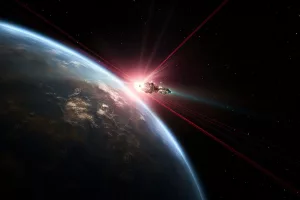NASA’s SpaceX Crew9 mission was an exciting adventure in space! The crew spent months conducting over 150 experiments, including groundbreaking research on plant growth and stem cells. Suni Williams made history with her recordsetting 62 hours of spacewalking, showcasing the amazing teamwork of astronauts from different countries. Their successful return to Earth in the Dragon spacecraft marked a big step in exploring the wonders of space and working together for a brighter future.
NASA has achieved a groundbreaking feat in space communication technology by transmitting a nearinfrared laser carrying test data over a distance of 16 million kilometers, setting a new record. This technological leap marks a significant advancement in data transmission across the solar system, with the potential for higher data rates and the possibility of transmitting highresolution images and even streaming video. The DSOC project envisions data rates at least 10 times more than existing technology, with the potential to prepare for future deep space missions and sending humans to Mars.
NASA and the University of Cape Town (UCT) have joined forces for a fouryear initiative called BioSCape, aimed at mapping the biodiversity of South Africa’s Greater Cape Floristic Region. The project will use satellite and aerial data in combination with ontheground observations to map marine, freshwater, and terrestrial species and ecosystems within the region. It is hoped this will strengthen conservation efforts and biodiversity research, whilst offering pioneering resources for charting and monitoring the diverse living organisms in one of the world’s most biodiverse areas. The BioSCape project is a testament to worldclass biodiversity research in South Africa and represents an ambitious leap forward in the understanding and conservation of unique ecosystems.



